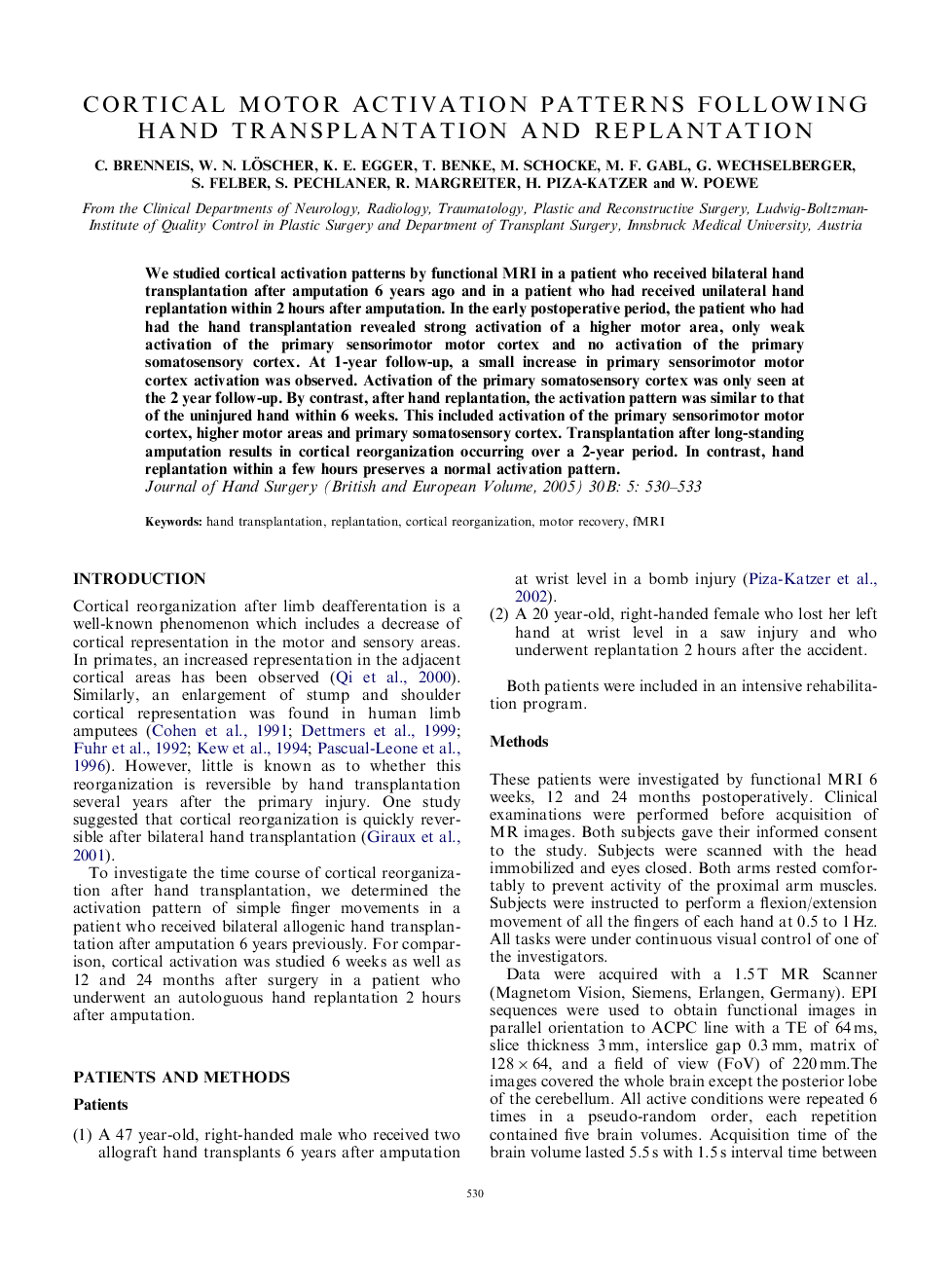| Article ID | Journal | Published Year | Pages | File Type |
|---|---|---|---|---|
| 10084594 | The Journal of Hand Surgery: British & European Volume | 2005 | 4 Pages |
Abstract
We studied cortical activation patterns by functional MRI in a patient who received bilateral hand transplantation after amputation 6 years ago and in a patient who had received unilateral hand replantation within 2 hours after amputation. In the early postoperative period, the patient who had had the hand transplantation revealed strong activation of a higher motor area, only weak activation of the primary sensorimotor motor cortex and no activation of the primary somatosensory cortex. At 1-year follow-up, a small increase in primary sensorimotor motor cortex activation was observed. Activation of the primary somatosensory cortex was only seen at the 2 year follow-up. By contrast, after hand replantation, the activation pattern was similar to that of the uninjured hand within 6 weeks. This included activation of the primary sensorimotor motor cortex, higher motor areas and primary somatosensory cortex. Transplantation after long-standing amputation results in cortical reorganization occurring over a 2-year period. In contrast, hand replantation within a few hours preserves a normal activation pattern.
Related Topics
Health Sciences
Medicine and Dentistry
Orthopedics, Sports Medicine and Rehabilitation
Authors
C. Brenneis, W.N. Löscher, K.E. Egger, T. Benke, M. Schocke, M.F. Gabl, G. Wechselberger, S. Felber, S. Pechlaner, R. Margreiter, H. Piza-Katzer, W. Poewe,
